This article was contributed by our friend Dr. Brooke Kalanick
Is it your hormones, your diet or your products? It is all of the above.
Far from a teenage nuisance, acne affects nearly 50 million Americans of all ages. To deal with it, the conventional route offers antibiotics, high dose vitamin A (known as Retin A) or of course, the Pill. And your drugstore or department store makeup counter focuses mostly on topical applications.
The trouble with all of these is that none of them address the underlying cause leaving many women still breaking out –or breaking out again as soon as they stop the medications. Leaving others wary of side effects from prescriptions or dried out and irritated from topical treatments.
So what is the underlying cause? In most cases, it’s the perfect storm of dietary issues colliding with hormone trouble.
This is awesome news, because it means there is a lot you can do—but before we get to that, let’s address the long standing position that diet has nothing to do with it:
What is acne anyway?
First a little skin anatomy 101: each pore is part of a pilosebaceous unit in your skin. The pore is the opening of a hair follicle (the pilo part) and within it there is a little oil or sebum making gland (the sebaceous part).
There are two types of comedones (aka pimples): open and closed. Open comedones are what we call blackheads, they are pores plugged with dead skin cells from within the follicle and excess sebum which when oxidized with outside air becomes grey or black in color. Closed comedones are known as “whiteheads” and are closed to the outside air and are more inflamed as that white stuff is indeed pus, the aftermath of inflammation at war with bacteria. These are often more swollen and red.
How to Rebalance Your Hormones With Breakfast — 2 Delicious Recipes
Face Mapping: What Your Pimples Are Trying To Tell You
Understanding the Causes of Acne Part 1: Hormones
What causes acne?
Let’s look first at the immediate situation going on in your pores and then we’ll discuss the background causes.
Here’s the four step process to getting a pimple:
The pore or follicle opening gets blocked. Usually with flattened, dead skin cells that don’t shed properly typically due to hormonal imbalances and dietary compounds like lectins).
There is excessive sebum (aka oil) production. This is due to excess testosterone, typically from insulin issues or poor hormone metabolism (i.e. gallbladder sluggishness, slow digestion or improper hormone metabolism in the liver).
Bacteria grow and infect the pore. With the pore now blocked and sealed up with dead skin and oil, this is a very happy little home for bacteria. That bacteria is Propionibacterium acnes which normally lives on skin’s surface without issue but once it outside air is kept out, we have an anaerobic (without oxygen) situation in the pore for that bacteria thrive.
Finally, inflammation occurs in the blocked pore and surrounding skin tissue. Locally, the hormones of the immune system (called cytokines) start an inflammatory reaction under your skin’s surface. Now you’ve got the red, swollen, possibly warm to the touch, perhaps even painful pimples, pustules and cysts. Note: pressure and squeezing of these type of blemishes will leak this inflammatory mess into the surrounding tissue spreading the infection and inflammation, so no hands baby!
How Diet Affects These 4 Steps
Insulin & Her Friends Increase Your Inflammation
Insulin is a hormone secreted to shuttle glucose into a cell. It’s released during stress or when we eat—more so when you eat carbohydrates (whole grains, legumes, cereals, breads, pastries, candy, sweets, sugar in all its forms, chips, tortillas, potato, sweet potato, fruit, etc.). It is released when you eat protein also, but as part of a healthier hormone mix for most (although some women with PCOS or insulin resistance do get an exaggerated insulin response from protein as well) and through a series of events, insulin is triggered when we eat fat as well—particularly when it’s combined with carbohydrates. (More on this here.)
Too much insulin will increase inflammation as well as increase testosterone (created from your progesterone in the ovaries) leading to more oil production and thus more breakouts. Insulin also lowers something called sex hormone binding globulin, which normally binds up thus inactivating much of our testosterone. Now we’ve got more active, free testosterone around too muck up the works in our pores.
This problem is worse in women with PCOS (polycystic ovarian syndrome) as they tend to also have metabolic issues creating more of an even more potent form of testosterone: DHT (di-hydro testosterone). Acne is a common issue with PCOS and can even be thought of as insulin resistance or diabetes of the skin.
Special Note for Women With PCOS & Acne: Ladies, we have it the roughest. Not only do we have the issues above but we have exaggerated responses to testosterone and other androgens like DHEA, DHT (a potent metabolite of testosterone) and androstenedione at the level of the pore. Our sebaceous glands are hypersensitive to testosterone so we can get oilier easier. But also we have more inflammation than your average girl.
Women with PCOS have a low level smoldering inflammation as a rule which can be turned easily on high by eating the wrong foods, stress, not managing our blood sugar, etc. As if this isn’t enough hell in our younger years, as we age we become more insulin resistant, more stress sensitive, more progesterone deficient, develop more inflammation and worsened testosterone metabolism. Couple that with PCOS creating more oxidative stress in general we can age quicker if we don’t’ have this inflammation and hormonal witches brew managed. Then it’s breakouts and wrinkles. Seriously is there anything worse? That is unfairness at its peak.
9.9 times out of ten if you have acne or especially PCOS and acne you will be prescribed the birth control pill. For most women this does normalize the acne by upping sex hormone binding globulin, lowering testosterone and upping your estrogen. But what happens when we come off the pill? Our hormonal issues are still there or worse and our metabolic issues are almost always worse. Never mind the rash of nutrient deficiencies creating by the pill not the least of which include zinc (key for healthy skin) and CoQ10 your big gun anti-oxidant key for skin health, aging and cellular health/energy production.
I 100% get the knee jerk reaction to take anything that will clear up your skin—I’ve done it myself. It’s a temporary fix at best and what’s the better option in my opinion is educating you about how you can heal your hormones and skin from the inside out.
Do you have PCOS? Check out my Empowered PCOS Program launching Sept 13! We will cover acne, root causes of PCOS, what you can do to heal your hormones, normalize your cycle, lose weight and improve fertility.
Back to Testosterone, Insulin and Your Skin
And insulin doesn’t stop with testosterone issues. Other insulin associated hormones get in the acne mix here too like IGF1(insulin like growth factor 1) which is a potent stimulator of cell growth throughout the body. High levels of insulin will cause higher levels of free IGF1 (remember it’s free hormones that are active). This free IGF1 may stimulate overproduction of the keratinocytes, causing them to overgrow and block your pores.
Then there’s ILGFBP3 (insulin like growth factor binding protein 3) which is a key regulator in programmed cell death, or apoptosis (the normal ending of a cell’s life cycle when it’s time to be replaced). High levels of insulin will lower circulating IGFBP3 delaying apoptosis of keratinocytes that line the follicle, leading to more flaky cells to clog up your pores.
What’s more, these IGFs can further interact with one another – especially when there is a high concentration of transglutaminase around – creating more inflammation. Transglutaminase is an enzyme in your intestines that digests wheat. The more wheat we’re eating the more transglutaminase will be made throughout your body – including in your skin.
With too many starchy and sugary carbs causing this whole insulin mess, you can see why gluten based carbs (bread, pasta, pastries, cookies, muffins, bagels, etc.) are double trouble for your skin because of transglutaminase. Not to mention that gluten contains something called amylopectin in our modern wheat it causes a really big insulin release making it what I call a supercarb.
NOTE: while the above mechanism is founded there is a lot of variability in individuals’ responses to wheat. If you tolerate wheat fine, have glowing clear skin, then this isn’t a biggie for you and feel free to eat as you wish as I’m not here to say gluten is the devil ☺ But if you’re struggling with breakouts, it’s worth a try to eliminate it and see if your skin improves.
On a personal note, wheat gives me the worst, deep, red painful breakouts whereas dairy gives me more superficial but greater in number breakouts. Basically mac and cheese is my skin’s worst nightmare ☺ or maybe it’s the ice-cream. They are in a tie at this point. I have PCOS and my skin is a good barometer of my hormonal health. The Empowered PCOS Program will explain why we suffer with acne more than other women.
Dietary Fat, Dairy, and Grain
Omega 6 Fatty Acids: One inflammatory cytokine (remember cytokines are the hormones of your immune system) involved in acne is IL1 (interleukin 1). Acne sufferers have elevated levels of the alpha form of IL1 and some studies show this inflammatory hormone causes increased skin scale formation (thus more scaley-nastys to block your pores). And when bacteria in our pores cause an immune reaction, even more IL1 is secreted (by little white blood cells called monocytes) which can disrupt the normal sloughing off of skin and yeah, more breakouts.
IL1 can be elevated from too many omega 6 fatty acids in our diet. These fats come primarily from grains, seeds, nuts, and vegetables oils (i.e. sunflower, grapeseed, etc.) so it’s important to balance your intake of the more anti-inflammatory omega 3s from things like fish or taking fish oil supplements as well as consider decreasing your Omega 6 intake when you have acne.
Lectins are common in plant foods (grains and legumes especially). When it comes to acne, they interfere with the dissolving and sloughing off of sticky corneocytes. This process requires enzymes called glycosidases (which dissolves the carbohydrate part of the cell) and proteases (which dissolve the protein part) – and it’s crucial that the glycosidases act before the proteases for the corneocyte to degrade properly and not block the pore. Lectins mess up the order of this process. And to make matters worse, lectins also stimulate IL1 alpha so we get more inflammation and more pore blockage.
And there’s even one more way lectins make you breakout: wheat germ agglutinin is a particular lectin that impairs zinc metabolism. Zinc works in several ways for skin health. With this wheat issue we’re talking at the level of your cell’s nucleus. Long story short, wheat germ agglutinin blocks important aspects of zinc’s metabolism which triggers a whole lot of inflammation.
This leads us to the next acne culprit in your diet: dairy. Milk, cheese, yogurt and other dairy products are very highly concentrated sources of calcium, which impairs zinc metabolism. And perhaps worse, dairy can have a very exaggerated insulin response (despite being considered “low glycemic” the insulin release it triggers is very similar to white bread). Dairy is also ripe with hormones, making it a triple threat to an acne free face.
Get Back To Basics
The popularity of a Paleo or Ancestral diet for weight loss and autoimmunity is at its peak – and for the most part, its reputation is rightly deserved. It is also a great template for clearing up acne.
The Paleo Diet isn’t magic, but it does get out all of the problem foods I just mentioned making it a great diet for clear skin. So give something like Whole30 a try to clear up your acne or at least consider drastically reducing some of the skin’s biggest offenders: sugar, wheat and dairy for 30-60 days.
This will be enough for some women to have a clear complexion – for others further support of the underlying insulin resistance, low estrogen or progesterone, poor testosterone metabolism, sluggish digestion or liver detoxification of hormones, poor nutrient status (i.e. low zinc is incredibly common) or issues like leaky gut, low digestive enzymes or disruption of your gut flora (i.e. need for probiotics) may need to be addressed beyond diet.
And don’t underestimate the power of beauty sleep! Lack of sleep is stressful and stress is inflammatory – so the old adage is true and you need your beauty rest. All other stress has a role as well, so when you feel your skin looks haggard, inflamed or you breakout during high stress, it’s not in your head.
So rest up, manage stress, take a pass at the Paleo diet and if you need help, by all means reach out and let’s see what the bigger issues may be: drbrooke@betterbydrbrooke.com
What You Put On Your Skin Matters
There is no shortage of products out there promising to clear up your blemishes but can be too harsh or drying and many are best tossed in the trash. When you’re deciding what to put on your acne prone skin here’s what you need to know:
Natural is a great idea. While converting your entire skin care regimen to 100% paraben, phthalate free etc. can be a big undertaking it’s wise to start moving in that direction. Because much of the underlying cause of acne, especially in PCOS, is hormonal things that mimic estrogen like parabens are only going to add to your misery.
Don’t over dry. Be careful with acne treatments and use only on congested breakout prone areas.
Don’t be scared of oil. Non-oil moisturizes are so popular among acne sufferers but for so many can make the sebaceous glands rebound and produce more oil. A natural oil like the Annmarie Skin Care Herbal Facial Oil for Normal/Combination skin—which smells so good I’d probably use it even if it didn’t work—or their Herbal Facial Oil for Oily Skin are great options.
With topical oils you can use sparingly (which saves you product to boot!) but they do wonders to help balance out oil production.
Exfoliation is key. Remember your normal sloughing off of old skin cells is compromised. If your skin is broken out it’s important to use something gentle as to not damage the skin further. The Kaolin Micro Exfoliant is a great gentle option. You can also mix a bit of sugar with water and a few drops of your facial oil to make a great DIY exfoliant.
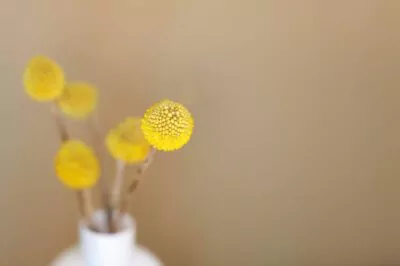

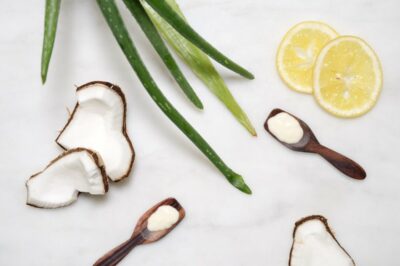
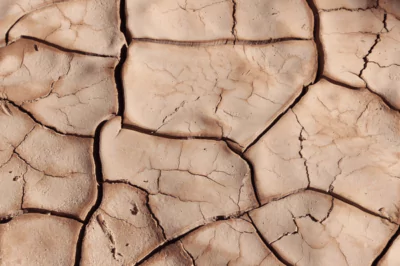
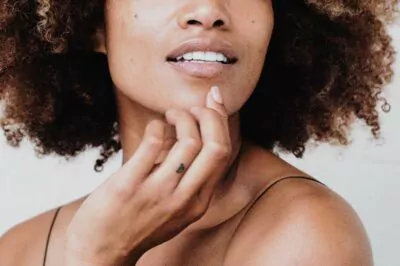
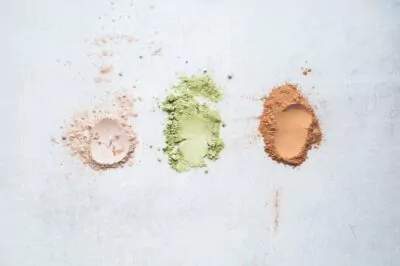

Leave a Reply